All issues

Volume 95, Issue 5
Displaying 1-3 of 3 articles from this issue
- |<
- <
- 1
- >
- >|
Original Paper
-
Shouhei Koyama, Yuki Miyauchi, Hiroaki Ishizawa2011 Volume 95 Issue 5 Pages 251-254
Published: May 31, 2011
Released on J-STAGE: August 01, 2011
JOURNAL FREE ACCESSRecently, the number of diabetics has steadily increased, and they have to measure their blood glucose level again and again each day. We invented a non-invasive system for measuring blood glucose level based on infrared spectroscopy of attenuated total reflection (ATR). And, using a PLS (partial least squares) calibration model we could measure the blood glucose level of diabetics. The purpose is to examine the accuracy of this monitoring system in clinical trials. And the difference in reflection times of infrared in an ATR prism was examined.View full abstractDownload PDF (1895K) -
Tadao Uetsuki, Kenji Maehara, Yuki Genba, Takashi Kanda2011 Volume 95 Issue 5 Pages 255-259
Published: May 31, 2011
Released on J-STAGE: August 01, 2011
JOURNAL FREE ACCESSRecently, fluorescent lamps having a higher output and longer life have been developed in the field of residential lighting. If lamp life can be estimated by measuring electronic signals such as lamp current and cathode heating current, the estimation would be very useful for designing lamp operating systems. To estimate lamp life, it is very important to know where the light-spot position, which is the spot that emits electrons, exists on the cathode. It was reported that the light-spot position for one operating system could be located by measuring the electronic signals. However, there are many kinds of electronic circuits for use in fluorescent lamp operating systems. It has not been confirmed whether this method for locating the light-spot position is useful for other kinds of electronic circuits. In this paper, the authors reveal that the method mentioned above is useful and that the way of heating the cathode in the electronic circuit influences how the spot moves as burning time passes.View full abstractDownload PDF (2259K) -
Shota Tokutake, Tomomi Dozono, Hiroaki Ishizawa2011 Volume 95 Issue 5 Pages 260-264
Published: May 31, 2011
Released on J-STAGE: August 01, 2011
JOURNAL FREE ACCESSA qualitative analysis of dyed textile cultural property by spectroscopic measurement is described. An analysis by non-destructive measurement is desired in the interest of conserving of cultural property. However, the existing methods are based on destructive inspection, and a lot of time and proficiency is necessary for analysis. To improve those problems, the application of laser-induced fluorescence (LIF) as a non-destructive measurement technique is proposed in this study. We measured the LIF spectrum of a sample, and compared it with a data base. This measurement technique is non-destructive, and easy.View full abstractDownload PDF (2466K)
- |<
- <
- 1
- >
- >|